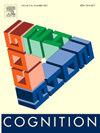Decoding the temporal dynamics of numerical semantics: Early cardinal activation and the critical role of ordinal processing in spatial-numerical associations
IF 2.8
1区 心理学
Q1 PSYCHOLOGY, EXPERIMENTAL
引用次数: 0
Abstract
Numbers are fundamental to human culture and technological advancement, influencing everything from basic measurement to complex computations. Despite their ubiquity, the cognitive processes underpinning numerical understanding, especially the spatial cognition of numbers, remain inadequately explored. Understanding these processes is crucial as they underpin our ability to learn and interact with our environment. This study utilizes a dual choice go/nogo paradigm integrated with event-related potential (ERP) technique and multivariate pattern analysis (MVPA) to examine the semantics processing mechanisms within spatial-numerical associations (SNAs), particularly focusing on the dynamic temporal characteristics of cardinal and ordinal semantics. The behavioral results revealed that the Spatial-Numerical Association of Response Codes (SNARC) effect was observed only in Experiment 1, whereas the ordinal position effect emerged consistently across both experiments, suggesting that SNAs primarily originate from sequential information constructed in working memory, challenging the traditional view that SNAs primarily arise from the spatial distribution of numerical quantity. Traditional ERP analysis did not detect significant motor preparation linked to numerical semantics. However, MVPA results indicated that cardinal semantics are processed prior to ordinal semantics. This temporal dissociation was observed with the decoding accuracy of cardinal semantics being significantly higher than the chance at 112 ms post-stimulus. In contrast, ordinal semantics processing emerged later (around 180–200 milliseconds), and combined analysis with response-related ERP component demonstrated that SNAs show closer associations with ordinal semantics. This research enriches our understanding of numerical cognition and provides new perspectives for exploring the complexity and diversity of SNAs.
解码数字语义的时间动态:早期基数激活和顺序处理在空间-数字关联中的关键作用
数字是人类文化和技术进步的基础,影响着从基本测量到复杂计算的一切。尽管它们无处不在,但支撑数字理解的认知过程,特别是数字的空间认知,仍然没有得到充分的探索。理解这些过程至关重要,因为它们支撑着我们学习和与环境互动的能力。本研究采用事件相关电位(ERP)技术和多变量模式分析(MVPA)相结合的双选择去/不去范式,研究了空间-数值关联(sna)中的语义加工机制,重点研究了基数语义和序数语义的动态时间特征。实验结果表明,空间-数值关联反应码效应仅在实验1中存在,而顺序位置效应在实验1和实验中均存在,这表明SNAs主要来源于工作记忆中的顺序信息构建,挑战了SNAs主要来源于数字数量的空间分布的传统观点。传统的ERP分析没有发现与数字语义相关的显著运动准备。然而,MVPA结果表明,基数语义先于顺序语义被处理。在刺激后112 ms,基本语义的解码准确率显著高于刺激后112 ms的解码准确率。相比之下,顺序语义处理出现较晚(约180-200毫秒),结合响应相关的ERP成分分析表明,sna与顺序语义的关联更为密切。本研究丰富了我们对数值认知的认识,为探索sna的复杂性和多样性提供了新的视角。
本文章由计算机程序翻译,如有差异,请以英文原文为准。
求助全文
约1分钟内获得全文
求助全文
来源期刊

Cognition
PSYCHOLOGY, EXPERIMENTAL-
CiteScore
6.40
自引率
5.90%
发文量
283
期刊介绍:
Cognition is an international journal that publishes theoretical and experimental papers on the study of the mind. It covers a wide variety of subjects concerning all the different aspects of cognition, ranging from biological and experimental studies to formal analysis. Contributions from the fields of psychology, neuroscience, linguistics, computer science, mathematics, ethology and philosophy are welcome in this journal provided that they have some bearing on the functioning of the mind. In addition, the journal serves as a forum for discussion of social and political aspects of cognitive science.
 求助内容:
求助内容: 应助结果提醒方式:
应助结果提醒方式:


